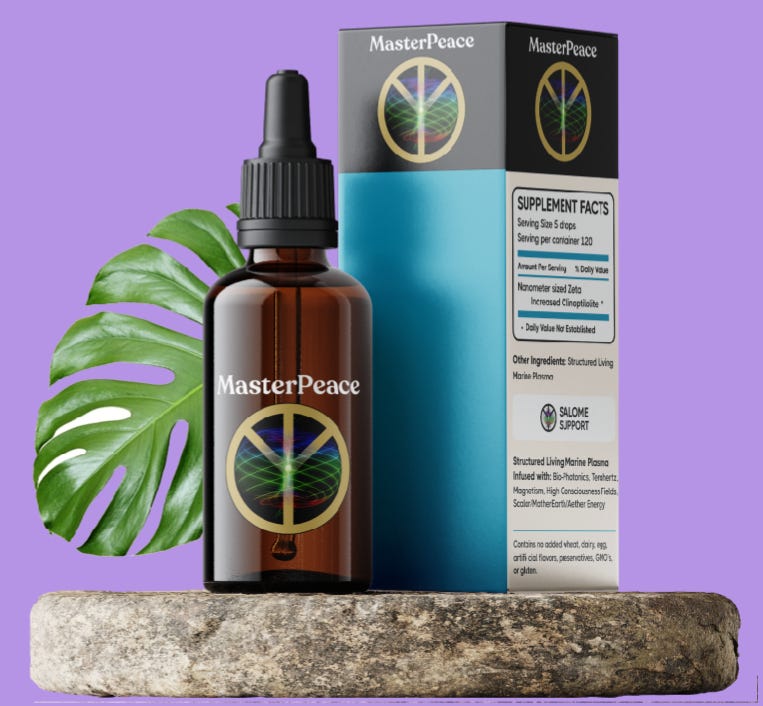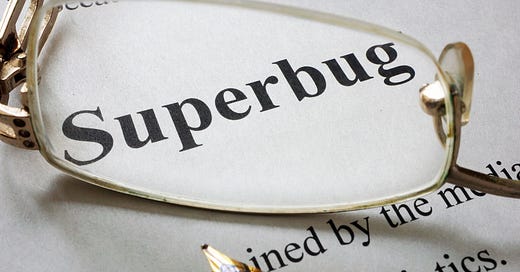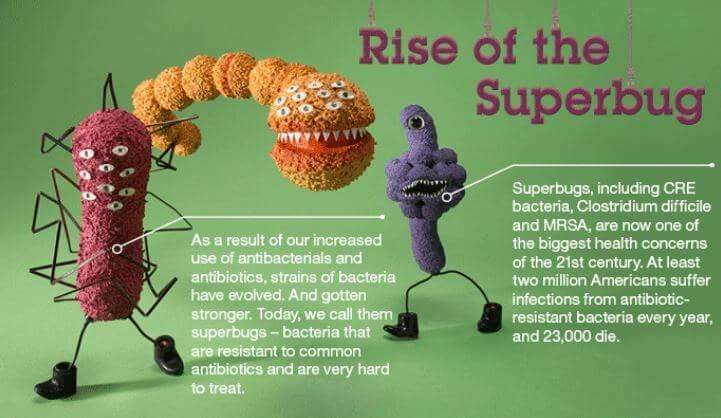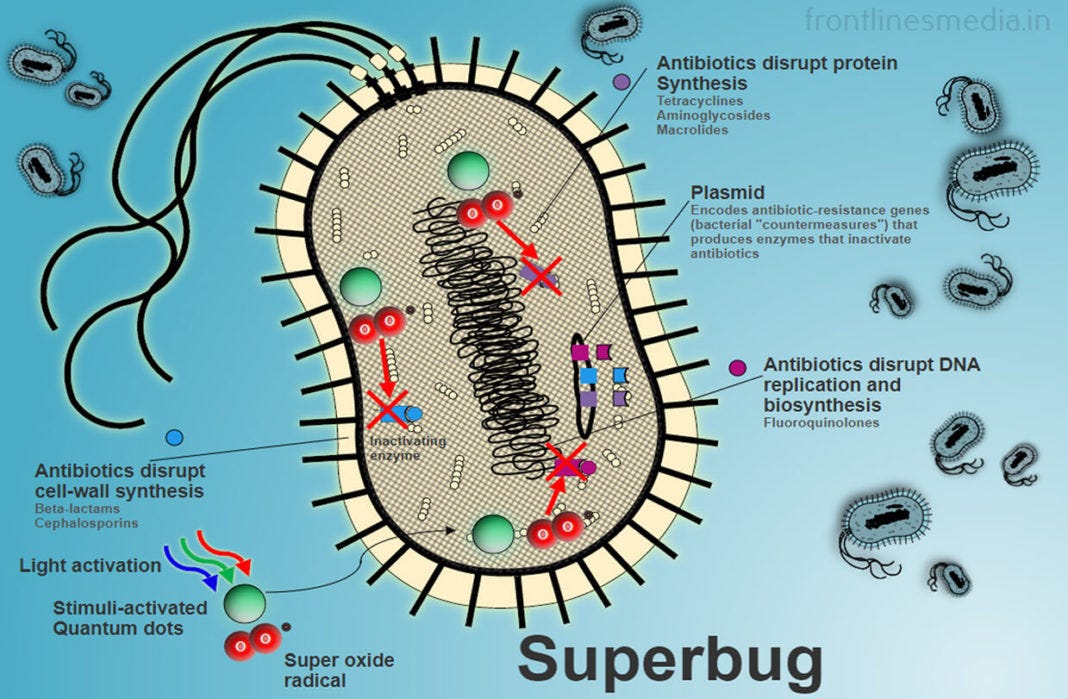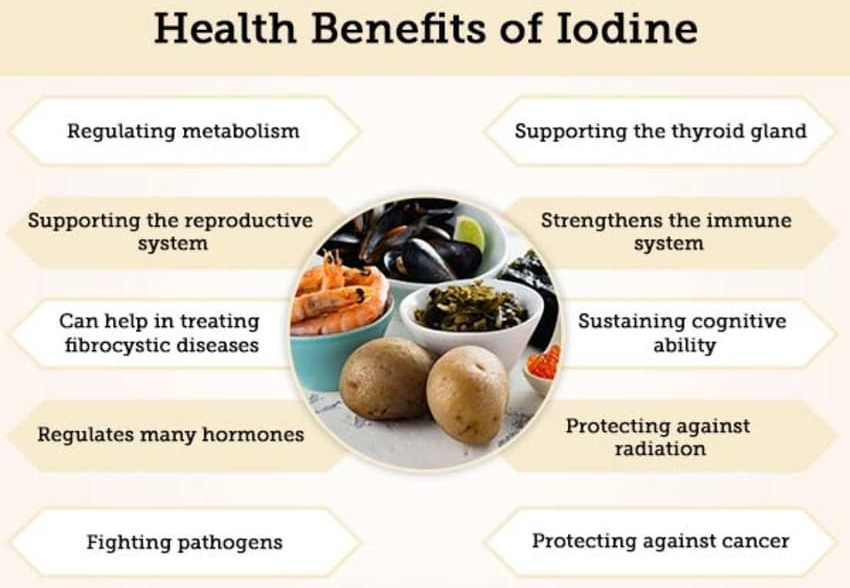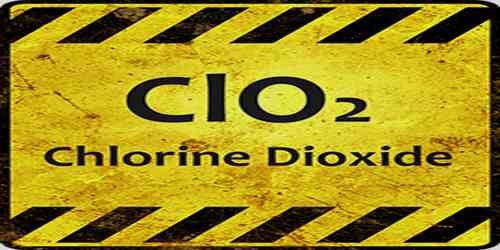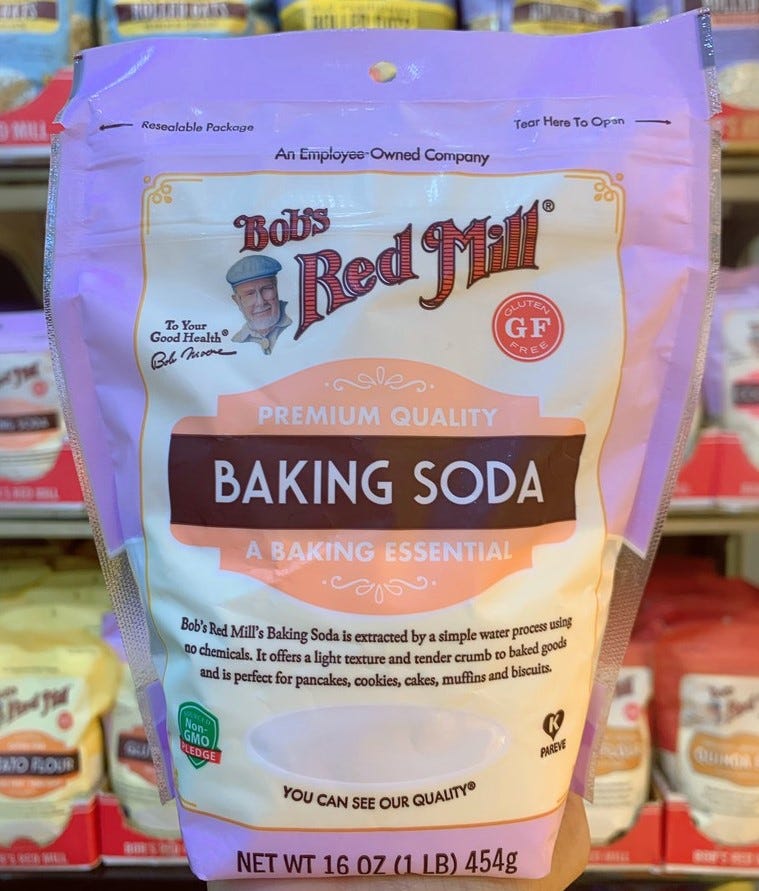Chlorine Dioxide, Iodine, Sodium Bicarbonate - the Super ANTIBIOTICS to Replace Big Pharma’s Expensive Poisons
BY 2050, Superbugs Could Kill 10 Million People a Year
What are superbugs?
‘Superbug' is a colloquial term that refers to dangerous bacteria that has mutated to resist the medications that normally treat it. A superbug does not come from one specific type of bacteria; rather, it refers to any bacteria that are resistant to multiple antibiotics. Superbugs are also called drug-resistant or antibiotic-resistant.
By Dr. Mark Sircus On Sept. 26, 2023, the Wall Street Journal published:
“The push for antibiotics to fight fast-evolving superbugs is snagging on a broken business model. Six startups have won Food and Drug Administration approval for new antibiotics since 2017. All have filed for bankruptcy, been acquired, or are shutting down.
About 80% of the 300 scientists who worked at the companies have abandoned antibiotic development, according to Kevin Outterson, executive director of CARB-X, a government-funded group promoting research in the field.”
Kent State University writes:
“Antibiotics are becoming obsolete. A recent United Nations report on drug resistance predicted that antibiotics could be useless within 30 years.
If so, 10 million people could die each year due to simple bacterial infections.”
Antibiotics are losing their magic, but they are not losing any of their toxicity.
The ultimate purpose for which a bomb exists is to kill people, to maim people, to cause people great suffering. Now, how is it possible to say the same thing about pharmaceutical companies and many of the drugs and vaccines they create?
That is 10 million who will die because of the abomination that modern medicine has become. That is because modern civilization has bought into pharmaceutical madness, or what I call pharmaceutical terrorism.
It is because the pharmaceutical paradigm hates natural medicine, even though emergency room and ICU doctors use natural medicines routinely to save lives every day.
Effective antibiotics are a cornerstone of medicine. But those drugs—considered miraculous after Alexander Fleming discovered penicillin in 1928—have begun to lose their charm.
Bacteria are increasingly becoming resistant, partly thanks to overuse, leaving doctors with few weapons to quell these infections, also known as superbugs.
The emergence of antibiotic resistance in bacteria is slowly dismantling our ability to treat infections, alleviate human suffering, and save lives.
The future of antibiotics requires that modern medicine humble itself and that politicians admit that they have passed laws that harm the public that make sure that the best natural or semi-natural antibiotics are not used, not even thought of, to treat infections and everything else.
Antimicrobial resistance threatens human and animal health and welfare, the environment, food and nutrition security and safety, economic development, and societal equity.
According to recent estimates, in 2019, 1.27 million deaths were directly attributed to drug-resistant infections globally.
It is a severe mental disease that does not care about any of this and will not open to alternatives that already exist. It is also a terrible blind spot in modern psychology, which does not know what I am talking about. Most doctors and health officials also would not have the slightest idea what I am leading to.
Three extraordinary medicines, let’s make it four, can be combined to solve the antibiotic-resistant infection problem. These substances can be used against all bacteria, viruses, and fungi.
This is a solution for all time because pathogens do not become resistant to iodine. Pathogens do not become resistant to sodium bicarbonate. Pathogens do not become resistant to chlorine dioxide, which many public water systems have used for decades.
Water professionals know it is effective against all classes of pathogens, which is why they use it. Hospitals have been using iodine successfully forever.
The primary testimony for high doses of magnesium chloride as an antibiotic comes from a doctor, as we shall see far below, from a hundred years ago.
So, the world does not need new antibiotics that bacteria will eventually become resistant to. It needs old antibiotics, three of which are natural.
The fourth, chlorine dioxide, is such a simple molecule that it can be considered semi-natural. Yes, other natural substances like garlic are helpful, but they cannot be concentrated into powerful medicines used in emergencies.
Natural Allopathic Medicine is a combination approach—attacking the infection—from multiple sides like we do with cancer.
When it comes to the financial and economic areas of life, we have consistently avoided taking our medicine, and our disease has gotten worse and worse.
In medicine, the refusal to address the downside of antibiotics and the despicable war against natural medicine is leading to more death and disease than anyone wants to imagine.
A case in point is a recent study that found that most patients suffering from long-term COVID-19 were vaccinated.
Iodine
Iodine kills 90 percent of bacteria on the skin within 90 seconds.
Iodine exhibits activity against bacteria, molds, yeasts, protozoa, and many viruses; indeed, of all antiseptic preparations suitable for direct use on humans and animals and upon tissues, only iodine is capable of killing all classes of pathogens: gram-positive and gram-negative bacteria, mycobacteria, yeasts, and protozoa.
Most bacteria are killed within 15 to 30 seconds of contact.
Iodine is by far the best antibiotic, antiviral, and antiseptic of all time.
Dr. Derry says Iodine is adequate
“have standard pathogens such as Staphylococcus, has the broadest range of action, fewest side effects, and no development of bacterial resistance.”
There is a world of difference between using an antibiotic—an anti-life substance—and an antibiotic, antiviral, and antifungal substance like iodine, which is life-serving because it is a fundamental necessary nutritional substance.
Aerosol Iodine was found to kill viruses in sprayed mists, and iodine solutions were equally effective.
In 1945, Burnet and Stone found that putting iodine on mice’s snouts prevented the mice from being infected with live influenza virus in mists.
They suggested that impregnating masks with iodine would help stop viral spread. They also recommended that medical personnel have iodine-aerosol-treated rooms to examine and treat highly infected patients.
👉 Article: Povidone Iodine Vapor Kills MRSA ~ Get it Here
Dr. Gabriel Cousens wrote:
“Historically, as early as 1911, people normally took between 300,000-900,000 micrograms of iodine daily without incident. Other researchers have used between 3,000 and 6,000 micrograms/day to prevent goiter.”
Dr. Paul B. Beeson had some exciting things to write about iodine and its use in treating syphilis.
“Early in this century, potassium iodide was regarded as “one of the most important drugs in the Pharmacopoeia.”
Although now displaced by many new therapeutic agents, an extensive body of clinical experience remains, showing that this simple compound can exert impressive effects on certain pathologic processes.
The element iodine was discovered in 1811, which soon led to the trial of iodides in treating many disorders.
The variety of diseases for which iodine was prescribed in the early years is astonishing—paralysis, chorea, scrofula, lacrimal fistula, deafness, distortions of the spine, hip-joint disease, syphilis, acute inflammation, gout, gangrene, dropsy, carbuncles, whitlow, chilblains, burns, scalds, lupus, croup, catarrh, asthma, ulcers and bronchitis—to mention only a few.”
“Within twenty years of the discovery of iodine, potassium salt was used to treat tertiary syphilis. Toward the end of the century, Osier’s textbook of medicine had this to say: In treating the visceral lesions of syphilis, iodide of potassium is of equal or even greater value than mercury. Under its use, ulcers rapidly heal, and granulomatous tumors melt away.”
Iodine was known by many medical doctors in the 19th century as an empirical remedy, a natural “heroic remedy.”
Nobel Laureate Albert Szent Györgyi, the physician who discovered Vitamin C in 1928, commented: “When I was a medical student, iodine in the form of universal medicine. Nobody knew what it did, but it did something and did something good.”
Dr. Cousens concludes, “In 1950, the Japanese had 100 times more iodine in their diet than Americans. In 2001, they had 202 times more iodine than Americans and used up to 13.8 milligrams daily instead of the average U.S. intake of 425 micrograms. Unfortunately, there has never been a real study about the optimal safe dosage of iodine. But, again, no one has ever died from iodine overdose or allergic reactions.”
Chlorine Dioxide is a powerful antimicrobial compound with a long history of use – mostly known for its ability to sanitize drinking water (the last 60 years being the primary chemical used in municipal water supplies).
Just because governments everywhere made it illegal to treat disease with it does not change the fact that it is effective against pathogens and can be used much more safely than antibiotics.
In 1988, NASA declared chlorine dioxide ‘A Universal Antidote,’ saying it was “able to destroy mold and fungus, as well as bacteria and viruses, with minimal harm to humans, animals, or plants.”
CLO2 is probably the most extensively tested disinfectant in history. It is a safe and effective biocide. It has been used to eliminate pathogens in water and is excellent for attacking biofilms.
👉 Chlorine Dioxide (MMS) Article
That is why it is used in commercial water-cooling towers. It works so well that pharmaceutical companies had to convince governments worldwide to make it illegal to swallow because it would put them out of business.
It is unlawful to promote it as a medicine; however, dentists use it to help their patients’ mouths legally.
ClO2, the so-called “ideal biocide,” should be applied as an antiseptic if it is understood why the solution kills microbes so rapidly and does not cause any harm to humans or animals.
Killing time for a bacterium is on the order of milliseconds in a 300 ppm ClO2 solution. For all types of viruses, killing time might be even faster.
Thus, a few minutes of contact time (limited by ClO2’s volatility) is enough to kill all pathogens without cytotoxic effects when used as an antiseptic. Importantly, bacteria and viruses cannot develop resistance to ClO2 as it reacts with biological thiols, which play a vital role in all living organisms.
Chlorine Dioxide is “hungry” to find any object with electrons to give up. That is its magic. Upon coming near any virus or pathogen, it snaps into contact with the germ, ripping four or five electrons from the wall of the pathogen by way of magnetic force.
The internal parts of the pathogen fall apart unprotected by their normally resistant outer shell. Chlorine dioxide treatments cause site-specific capsid protein backbone cleavage, inhibiting viral genome injection into the host cell.
There’s a HUGE difference between chlorine (CL2) and the disassociated chlorine ion. There is no chlorine in chlorine dioxide, but don’t tell the FDA or the news media. They don’t want to know.
Each ClO2 gas molecule is self-sacrificing. It is used up after one or two killings.
Unlike drug store pills, where you expect a chemical or drug to compromise a hundred things before being used up, this ClO2 gas gets used up rather quickly in a clean burn that enhances recovery from infectious disease.
Because of this biofilm control property, dentists love it because it gets the teeth squeaky clean as the film pellicle that forms on teeth (responsible for plaque adherence) breaks down.
Its effectiveness for whitening and freshening does not come from magic but from fundamental chemistry. But even more importantly, chlorine dioxide mouthwash used over seven days effectively reduces plaque, tongue coating accumulation, and the counts of Fusobacterium nucleatum in saliva.
As one would expect, it is also effective at eliminating bad breath.
Chlorine Dioxide has been approved by the Environmental Protection Agency (EPA) and is included in the World Health Organization’s (WHO) Guidelines for Drinking Water Quality.
The U.S. Food and Drug Administration (FDA) also has approved the use of chlorine dioxide in specific food applications.
Chlorine dioxide helps destroy bacteria, viruses, fungi, and parasites that can make people sick, such as Cryptosporidium parvum and Giardia lamblia.
Chlorine dioxide (ClO2) destroys through oxidation. Because of the chemical nature of chlorine dioxide, it destroys these microorganisms, leaving behind only a few grains of plain table salt, discharged oxygen atoms, and dead organisms, which the body can wash out of the system.
Chlorine dioxide does a slam dunk on all classifications of pathogens. Iodine at high dosages does the same. Campers use both to wipe out all classes of pathogens from untreated water.
Dr. George Georgiou published in the Journal of Bacteriology & Mycology that chlorine dioxide effectively eradicated MRSA. It came out ahead of all other natural substances tested.
Chlorine dioxide used in vitro was the main focus of this research. He is also about to publish his success with Lyme disease, with the stubborn bacteria Borrelia, which forms biofilms to protect itself. Chlorine dioxide shreds biofilms to pieces.
👉 Article: Miracle Mineral Solution (Chlorine Dioxide) For Detox and Other Amazing Health Benefits
Sodium Bicarbonate – Baking Soda
Believe it or not, baking soda has antibacterial properties, reducing the occurrence or accumulation of bacteria in your mouth that may cause decay or periodontal disease. Brushing with baking soda can help remove food remains that encourage bacterial growth.
At physiologic concentrations, bicarbonate enhanced the activity of some antibiotics. More importantly, concerning sepsis, bicarbonate potentiated antibiotics’ impact on four bacterial species identified by the World Health Organization as global health priorities.
The antibacterial activity of baking soda (sodium bicarbonate) reveals substantial inhibitory activity against Streptococcus mutans, not due to ionic strength or high osmolarity.
Short-term exposure assays showed the significant killing of bacterial suspensions when baking soda was combined with the detergent sodium dodecyl sulfate.
Multiple, brief exposures of sucrose-colonized S mutans to baking soda and sodium dodecyl sulfate caused statistically significant decreases in viable cells.
Using oral health care products with high concentrations of baking soda could decrease levels of cariogenic S mutans in saliva and plaque.
pH (hydrogen ion concentrations) affects bacterial growth. Healthy cells need optimum pH for carrying out their biochemical and molecular process.
Bacteria can only live, grow, and multiply in a specific range of physical environments. pH is a factor that influences the bacterial growth.
Bacteria are sensitive to pH because it affects the catalytic ability of enzymes and alters the ionic charge of many biomolecules, affecting metabolic reactions.
Bicarbonate acts in conjunction with carbon dioxide to buffer our blood.
The optimum growth pH is the most favorable pH for the growth of an organism. The lowest pH value that an organism can tolerate is called the minimum growth pH and the highest pH is the maximum growth pH.
These values can cover a wide range, which is important for the preservation of food and to microorganisms’ survival in the stomach.
For example, the optimum growth pH of Salmonella spp. is 7.0–7.5, but the minimum growth pH is closer to 4.2.
Most bacteria are neutrophiles, meaning they grow optimally at a pH within one or two pH units of the neutral pH of 7.
Most familiar bacteria, like Escherichia coli, staphylococci, and Salmonella, are neutrophiles and do not fare well in the acidic pH of the stomach. However, there are pathogenic strains of E. coli, S. typhi, and other species of intestinal pathogens that are much more resistant to stomach acid. In comparison, fungi thrive at slightly acidic pH values of 5.0–6.0.
Microorganisms that grow optimally at a pH less than 5.55 are called acidophiles. For example, the sulfur oxidizing Sulfolobus isolated from sulfur mud fields and hot springs in Yellowstone National Park are extreme acidophiles.
These archaea survive at pH values of 2.5–3.5. The archaean genus Ferroplasma species live in acid mine drainage at pH values of 0–2.9.
Lactobacillus bacteria, which are an essential part of the normal microbiota of the vagina, can tolerate acidic environments at pH values 3.5–6.8 and also contribute to the acidity of the vagina (pH of 4, except at the onset of menstruation) through their metabolic production of lactic acid. The vagina’s acidity plays an essential role in inhibiting other microbes that are less tolerant of acidity.
pH change can promote or inhibit bacterial growth.
Sodium bicarbonate (baking soda) can function as an antimicrobial agent alone or synergistically with other antimicrobials. It can reduce the occurrence or accumulation of bacteria in your mouth that may cause decay or periodontal disease. Brushing with baking soda can help remove food remains that encourage bacterial growth.
Magnesium Chloride
Many years ago, I came across Dr. Raul Vergini and his work in Italy using magnesium chloride to fight infectious diseases. He reminded me that magnesium chloride is an essential and powerful agent in fighting infectious diseases, as is iodine, chlorine dioxide, and sodium bicarbonate.
He wrote, “Magnesium chloride has a unique healing power on acute viral and bacterial diseases. It cured polio and diphtheria, which was the main subject of my magnesium book.
A few grams of magnesium chloride every few hours will clear nearly all acute illnesses, which can be beaten in a few hours. I have seen many flu cases healed in 24-48 hours with 3 grams of magnesium chloride taken every 6-8 hours.”
Dr. Vergini wrote:
“In 1915, a French surgeon, Prof. Pierre Delbet, M.D., was looking for a solution to cleanse wounds because he had discovered that the traditional antiseptic solutions mortified tissues and facilitated the infection instead of preventing it.
He tested several mineral solutions and discovered that a magnesium chloride solution was not only harmless for tissues but also greatly affected leucocytic activity and phagocytosis, so it was perfect for external wound treatment.
Dr. Delbet performed many in vitro and in vivo experiments with this solution, and he became aware that it was good not only for external applications but also as a powerful immuno-stimulant if taken by injections or even by mouth.
He called this effect ‘cytophilaxis’. In some in vivo experiments, the phagocytosis rate was increased by up to 300%.”
He continues…
“From a practical standpoint, please remember that only Magnesium CHLORIDE—and no other magnesium salt—has this ‘cytophylactic’ activity; probably, it’s a molecular and not a merely ionic matter.
The solution to be used is a 2.5% Magnesium Chloride hexahydrate (MgCl2-6H2O) solution (i.e., 25 grams/1 liter of water).”
Dosages are as follows:
Adults and children over 5 years old…… 125 cc
4-year-old children……………………………….… 100 cc
3-year-old children…………………………………. 80 cc
1-2-year-old children…………………………….. 60 cc
Over 6-month-old children……………………30 cc
Under 6-month-old children………………. 15 cc
In acute diseases, the dose is administered every 6 hours (every 3 hours for the first two doses if the case is severe), then space every 8 hours and then 12 hours as improvement continues.
After recovery, it’s better to go on a dose every 12 hours for some days.
Conclusion
Antibiotics were never anything but a temporary good idea.
Fluoroquinolones are the worst antibiotics, are among the most dangerous drugs on the market, and should be avoided without question. Despite their dangers, fluoroquinolones are the most prescribed class of antibiotics in the United States.
No other antibiotic carries as high a potential to cause serious, permanent injuries and even death as the fluoroquinolones do.
The age of antibiotics is about over, as great harm has been done to the world’s populations with them. We have come close to compromising our biological existence with the reckless overuse of antibiotics.
Now, we have antibiotic-resistant strains of pathogens encroaching on our biospheres, and it is getting increasingly dangerous to set foot anywhere near a hospital.
Many people, including children, who die in the hospital after surgery die not from the surgery itself but from infections that get out of control.
Infections cause 68 percent of child deaths.
“In many ways, this is it,” said Professor Tim Walsh. “This is potentially the end. There are no antibiotics in the pipeline that have activity against NDM-1-producing Enterobacteriaceae. We have a bleak window of maybe ten years where we are going to have to use the antibiotics we have very wisely but also grapple with the reality that we have nothing to treat these infections with.
👉 ARTICLE: Chlorine Dioxide
👉 Baking Soda - Sodium Bicarbonate (Don’t buy the manufactured stuff)
👉 BOOKS: Healing With Sodium Bicarbonate (Baking Soda)
👉 CR Iodine Supplement also Lugol’s Iodine
👉 BOOKS: Healing With Iodine
